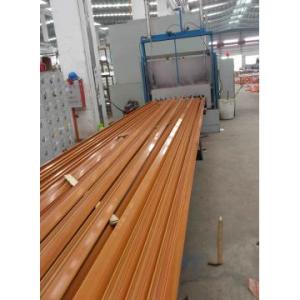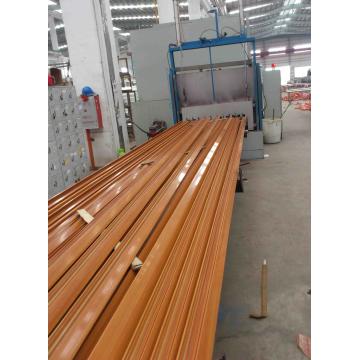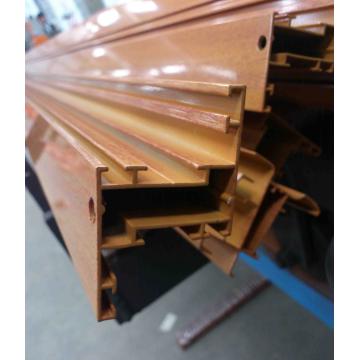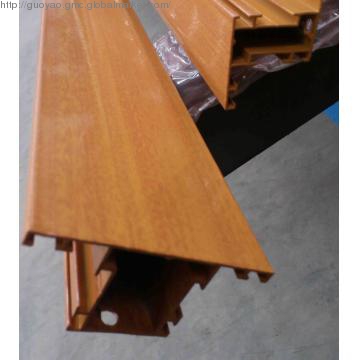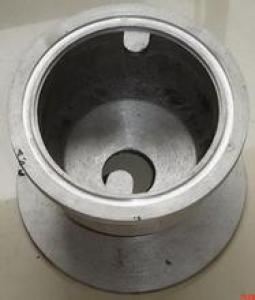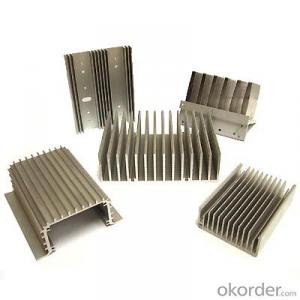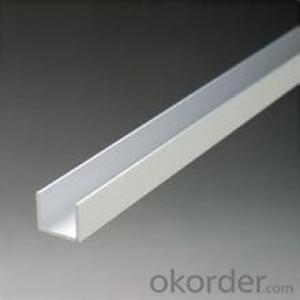Aluminum Handrail Profiles - Aluminum Profile, Profil en Aluminium, الألومنيوم
- Loading Port:
- China Main Port
- Payment Terms:
- TT OR LC
- Min Order Qty:
- -
- Supply Capability:
- -
OKorder Service Pledge
Quality Product, Order Online Tracking, Timely Delivery
OKorder Financial Service
Credit Rating, Credit Services, Credit Purchasing
You Might Also Like
Aluminum Profile
surface:Wood Color
Alloy:6063 T5
Country: Africa,Algeria,Libya..ect
Aluminum Profile
Matrial: 6063 T5/T6
surface: Wood ColorCountry: Libya,Algeria
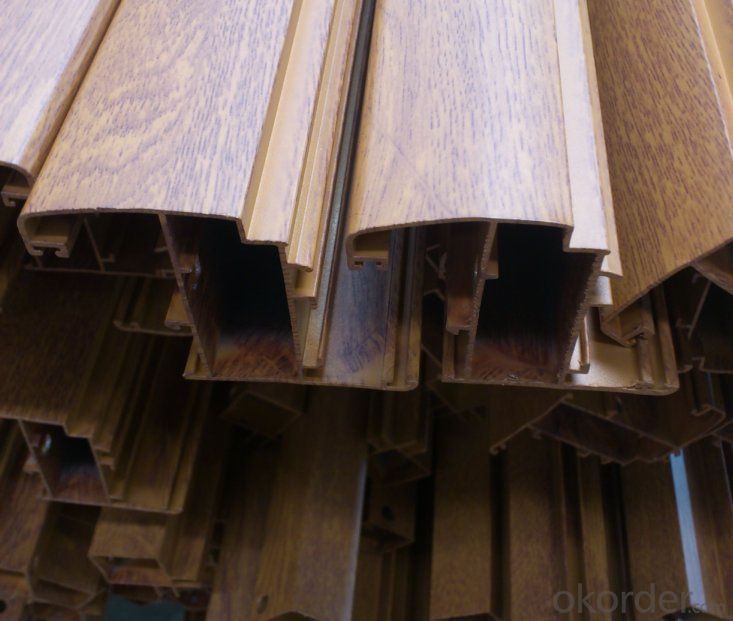
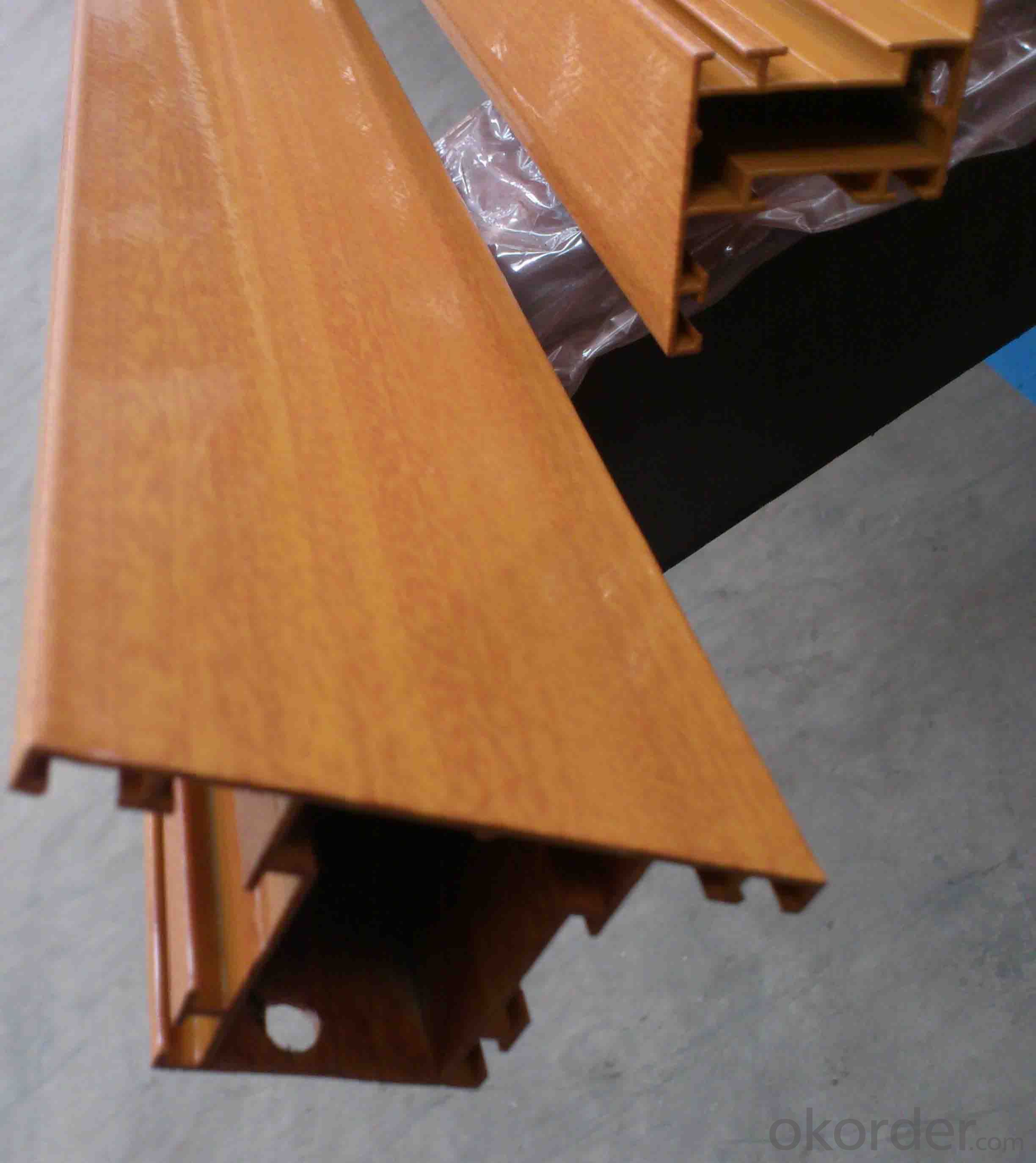

- Q: What are the vibration damping properties of aluminum profiles?
- Aluminum profiles exhibit good vibration damping properties due to their inherent material properties, such as high stiffness and low density. These properties enable the profiles to effectively absorb and dissipate vibrations, reducing their transmission through the structure. Additionally, aluminum profiles can be further enhanced with damping materials or techniques to improve their vibration damping capabilities.
- Q: This question asks about the various types of adhesives that can be used for bonding aluminum profiles to the frames of buildings.
- <p>There are several types of adhesives used to attach aluminum profiles to building frames, including epoxy resins, polyurethane adhesives, and silicone sealants. Epoxy resins are known for their high strength and resistance to chemicals and temperature changes. Polyurethane adhesives offer flexibility and are good for bonding different materials. Silicone sealants are used for their weather resistance and flexibility, making them suitable for exterior applications. Each type of adhesive has specific properties that make it suitable for different applications and environmental conditions.</p>
- Q: What are the noise reduction properties of aluminum profiles?
- Aluminum profiles have good noise reduction properties due to their ability to absorb and dampen sound vibrations. The high density and stiffness of aluminum help to minimize noise transmission, making it an effective material for reducing unwanted noise in various applications.
- Q: This question asks for an overview of the various types of aluminum profiles that are typically utilized in construction projects.
- <p>Aluminum profiles used in construction come in various types, each serving specific purposes. Common types include: 1. Extruded Profiles: These are the most common, created by forcing aluminum through a die to achieve desired shapes. 2. Structural Profiles: Used for structural integrity in buildings, such as beams and columns. 3. Fa莽ade Profiles: Specifically designed for the exterior cladding of buildings. 4. Window and Door Profiles: For frame construction in windows and doors. 5. Fastening Profiles: Used for joining and fixing other aluminum components. 6. Special Profiles: Custom-made for unique applications. 7. Decorative Profiles: For aesthetic purposes, enhancing the appearance of structures. Each type has specific properties and is chosen based on the structural requirements and design considerations of the construction project.</p>
- Q: This question asks for methods to guarantee the reliability of aluminum profiles used in a construction project.
- <p>To ensure the quality of aluminum profiles in your building project, first, source from reputable suppliers with a proven track record. Request for certifications such as ISO 9001 for quality management systems. Inspect the profiles for uniformity in thickness and straightness. Check for surface defects like scratches or dents. Ensure the profiles meet the required strength and durability standards by requesting test reports or conducting your own tests. Verify the alloy composition to ensure it's suitable for your project's environmental conditions. Lastly, consider the manufacturer's warranty and after-sales service as an indicator of their confidence in product quality.</p>
- Q: How do aluminum profiles perform in terms of vibration resistance?
- Aluminum profiles exhibit excellent vibration resistance due to their inherent stiffness and high strength-to-weight ratio. The material's low density helps in dampening vibrations, while its structural integrity ensures minimal deformation or fatigue under dynamic loads. Additionally, aluminum profiles can be further enhanced with vibration-damping materials or techniques to optimize their performance in vibration-prone applications.
- Q: How do aluminum profiles compare to other types of materials?
- Aluminum profiles have several advantages over other types of materials. Firstly, aluminum is lightweight, making it easier to handle and transport. It is also highly resistant to corrosion, making it ideal for outdoor or high-moisture environments. Additionally, aluminum profiles offer excellent strength-to-weight ratio, providing structural stability without unnecessary weight. Moreover, aluminum is a highly versatile material that can be easily shaped and customized to meet specific design requirements. Lastly, aluminum is sustainable and recyclable, making it an environmentally friendly choice. Overall, aluminum profiles offer numerous benefits in terms of durability, versatility, and sustainability compared to other materials.
- Q: This question asks about the impact of aluminum profiles on the sound insulation properties of a building.
- <p>Aluminum profiles can significantly affect the sound insulation of a building. They are often used in construction for their strength and lightweight properties. However, aluminum is a good conductor of sound, which can lead to sound transmission through the building structure. To enhance sound insulation, aluminum profiles are often combined with soundproofing materials such as acoustic foam or rubber seals. These materials help to absorb or block sound waves, reducing noise transmission. Additionally, the design and installation of aluminum profiles can also impact sound insulation; proper sealing and insulation techniques are crucial to minimize sound leakage.</p>
- Q: How do you prevent galling or seizing with aluminum profiles?
- To prevent galling or seizing with aluminum profiles, it is important to use proper lubrication. Applying a suitable lubricant, such as a specialized anti-seize compound or a lubricating oil, can significantly reduce friction and prevent the surfaces from sticking together. Additionally, ensuring that the aluminum profiles are clean and free from any contaminants or debris can also help prevent galling or seizing.
- Q: What do the 6063 and T5 represent in the aluminum profile 6063-T5?
- 5: the main alloying element is magnesium6: mainly add alloy elements for silicon and magnesium7: the main alloying elements are zinc and magnesium8: a new alloy that does not belong to the above alloy series2.2, second digits: an alloy that indicates the addition of alloying elements or impurities in the original alloy0: table alloy1: table original alloy by the first amendment2: table original alloy after second modifications2.3,
Send your message to us
Aluminum Handrail Profiles - Aluminum Profile, Profil en Aluminium, الألومنيوم
- Loading Port:
- China Main Port
- Payment Terms:
- TT OR LC
- Min Order Qty:
- -
- Supply Capability:
- -
OKorder Service Pledge
Quality Product, Order Online Tracking, Timely Delivery
OKorder Financial Service
Credit Rating, Credit Services, Credit Purchasing
Similar products
Hot products
Hot Searches
Related keywords
